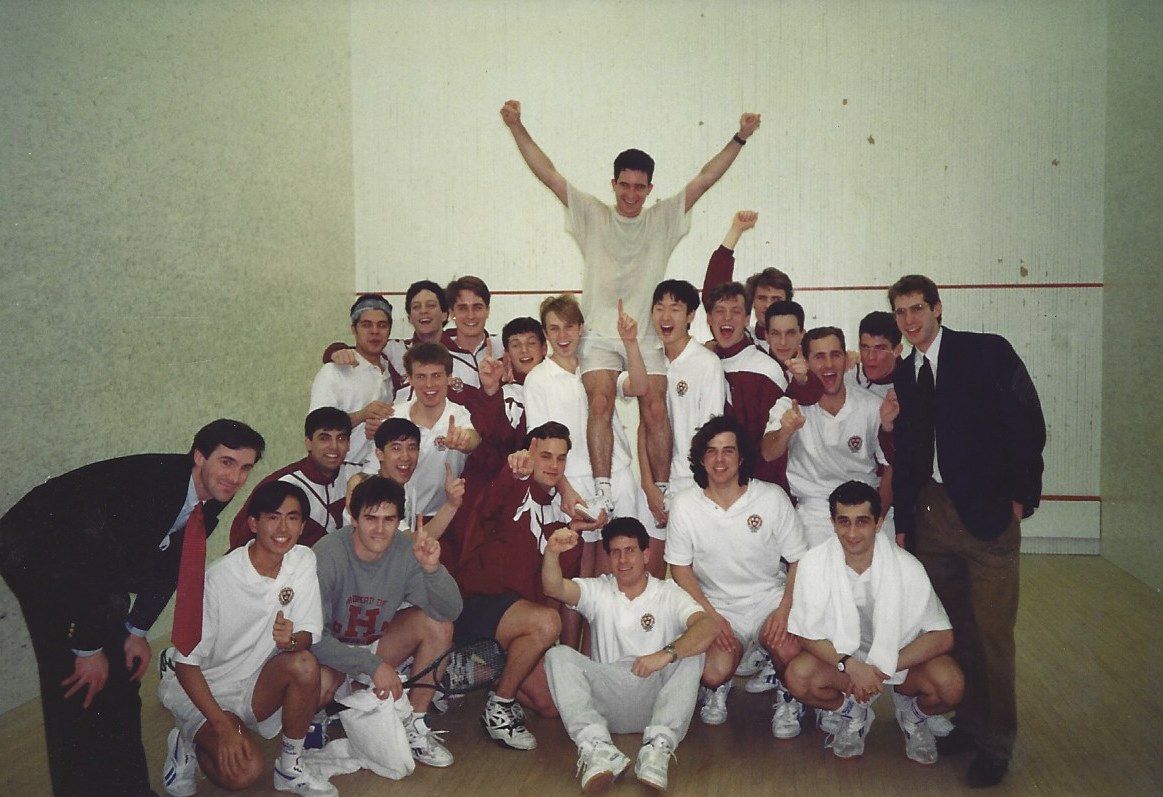by James Zug
It is enshrined in our nation’s founding document. The big three: life, liberty and happiness.
In the original draft of the Declaration of Independence, Thomas Jefferson wrote that one of the truths, sacred and undeniable, and one of the rights, inherent and inalienable, was the pursuit of happiness. In the edited final version, it was shortened to an unalienable right.
Happiness itself is not a right. Rather, it is access to the pursuit of happiness that is the key. For hundreds of millennia, humans have striven for happiness. After food, water, shelter, it has been a primary, fundamental, sacred and undeniable motivator. Unalienable, even.
In this century, one of the leading thinkers about happiness is Tal Ben-Shahar. He taught positive psychology in a famously popular class at Harvard and more recently has worked with hundreds of thousands world-wide. He is the New York Times bestselling author of a half-dozen books on happiness, books that have been translated into more than twenty-five languages.
According to Ben-Shahar, squash is the perfect game for the pursuit of happiness. It is the ultimate high-intensity interval workout, it is social. It is a type of active mindful meditation. All of which might explain why you love the game so much.
Squash was a key part of Tal Ben-Shahar’s pursuit of happiness. After being born and raised in Israel, from the age of nine to fourteen he lived with his family in a small village fifty miles from Johannesburg. It is where he layered a South African lilt onto his Israeli accent. After school each day, he played squash alone.
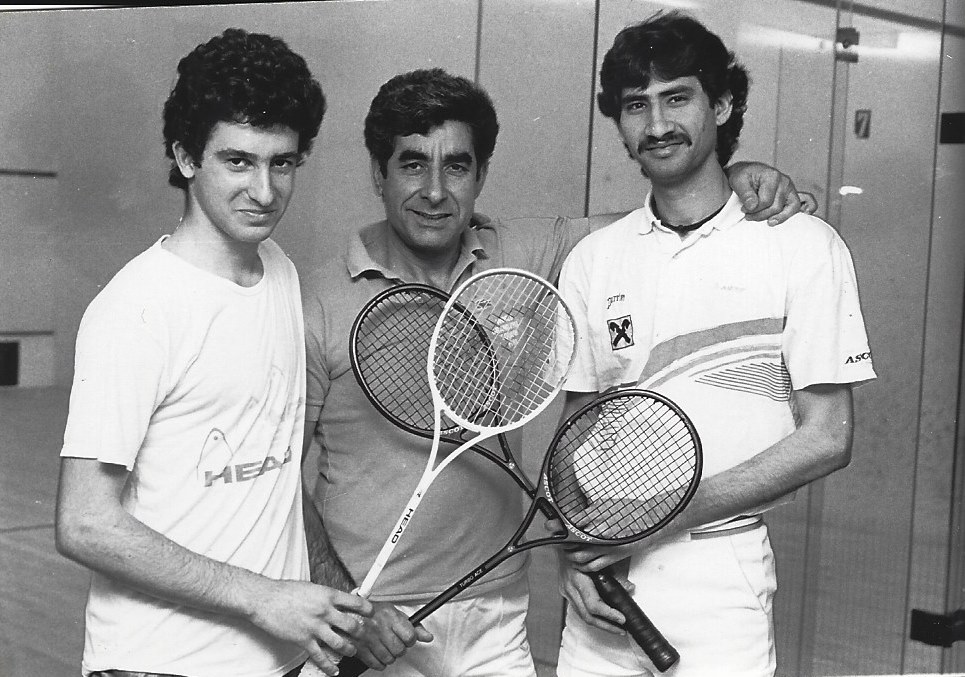
When his family moved back to Israel, he started pursuing squash seriously and dreamed of playing professionally. The country’s biggest club was a five-minute walk from the Ben-Shahar home near Tel-Aviv. When he was sixteen, he won the Israeli open national singles championship. As he writes in the opening to his first book, Happier, Ben-Shahar expected the long-dreamed-of victory to bring happiness. When he went to bed that night, he instead felt emptiness: “I was befuddled and afraid. The tears of joy shed only hours earlier turned to tears of pain and helplessness. For if I was not happy now, when everything seemed to have worked out perfectly, what prospects did I have of attaining lasting happiness?”
He set himself the goal of becoming world champion. How to become a world champion? Go to where the world champion is.
At seventeen, a few weeks after graduating from high school, Ben-Shahar flew alone to London to train at Stripes, the famous club in Ealing Broadway where the Jansher Khan was in residence. He emulated Khan. “Jansher ran seven miles every morning,” Ben-Shahar said, “so I ran seven miles every morning. He spent four hours on court every day, so I spent four hours on court. He lifted weights for an hour, so I lifted weights for an hour. He stretched for an hour, so I stretched for an hour.” Within six months, Ben-Shahar had improved enough to be invited to practice with Khan and soon to travel to tournaments to warm him up before matches. At the same time, Ben-Shahar became one of the top juniors in the world.
But his body and mind let him down. He suffered injuries to his hamstring, groin, knee and then lower back, the L4 and L5 vertebrae. He also was a perfectionist, impatient with a perceived lack of progress and deeply fearful of failure. He solely focused on the destination, not the journey and felt tremendous pressure in the latter stages of tournaments. It was an all or nothing approach. As he writes in The Pursuit of Perfect, he couldn’t handle emotions, disappointment and anxiety. He lost in the finals of the 1991 Israeli national championships, unable to clinch a record fourth title. But he couldn’t express sadness about the loss. He was too much of a stoic.
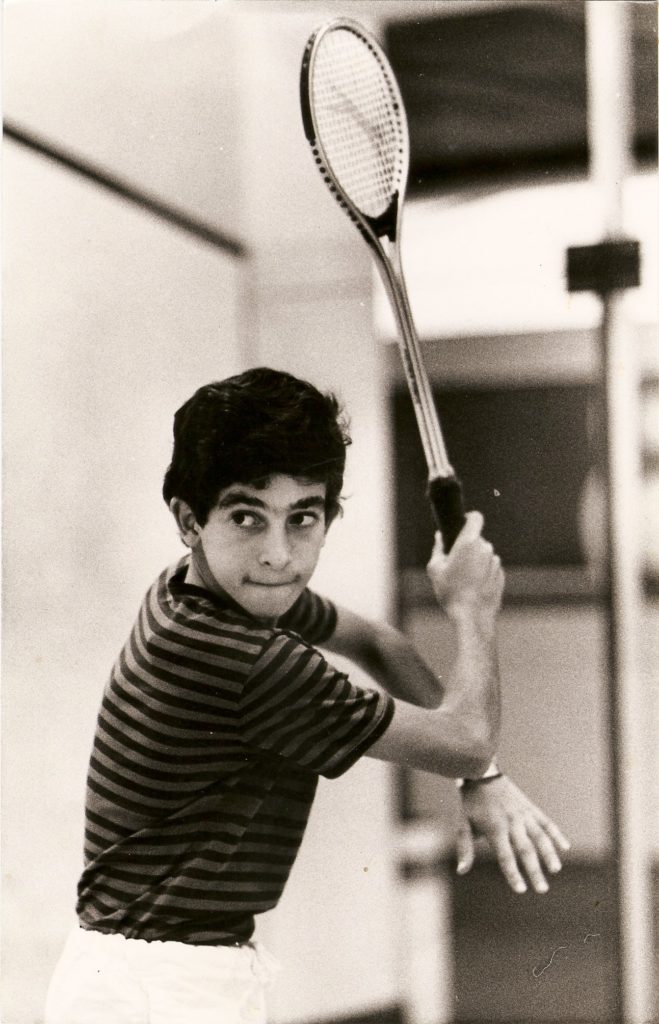
Now the injuries forced him to step aside. “I was devastated,” he wrote, “and yet part of me was relieved; the doctors had provided me with an acceptable excuse for my failure.”
At age twenty-two, after completing his Israeli military service, he matriculated at Harvard. (At the time, his surname was often spelled Ben-Shachar or Ben-Schachar.) He started as a computer science major, but wasn’t happy. He also struggled on the squash team. “The best class I took at Harvard,” Ben-Shahar said, “was with professor Bill Doyle.”
The coach of the Harvard team, Doyle became disgruntled with Ben-Shahar. He was playing high up on the ladder but wasn’t fully engaged. Freshman year, he lost whenever the opponent was very good: to Princeton twice and to Yale and Western Ontario. He took squash for granted. The team aspect hadn’t gelled—Ben-Shahar had never been long-term on a team before. He wanted to practice separately. “I was not committed to the team,” Ben-Shahar wrote in Choose the Life You Want. “For me, training felt like a burden.”
Mid-season his sophomore year, Ben-Shahar got a phone call from Doyle. “He gave me an ultimatum,” Ben-Shahar said. “’We want you on the team but not at the price of the team. Either you are on the team or you’re not.’ I called him back a few hours later. ‘I’m in.’”
Instantly squash became, he wrote, “my most meaningful experience at Harvard.” A few weeks later, Ben-Shahar played a key role in Harvard clinching a national title. In the annual regular season dual match against Yale, the score went to 4-4. In his match against Yale’s Jamie Dean, it was knotted at 2-2. In the fifth, Ben-Shahar saved three match points and won 18-17. In the nationals a few days later, Harvard avoided playing Yale and went on to beat Western Ontario in the finals, also 5-4.
After earning few accolades as a freshman, Ben-Shahar was a first-team All American as a sophomore, junior and senior and co-captain of the team his last two years. His junior year, he went undefeated and captured the national intercollegiate individual title, topping his freshman phenom teammate Daniel Ezra in the finals. Harvard cruised to the national team title. The coaches of the Ivy League named him Ivy League Player of the Year. Senior year, he led Harvard again to the national team title; he lost in the semis of the individuals to teammate Joel Kirsch.
While committing to the squash team, Ben-Shahar also switched to a double major in psychology and philosophy. He wanted to know why winning squash matches hadn’t given him enduring happiness.
After graduation, he spent a year on a fellowship at Jesus College, Cambridge. He earned his blue, playing his last competitive match ever in the annual Oxford v. Cambridge match, a two-hour 9-7 in the fifth barnburner against Roger Arjoon, a Yale ’95.
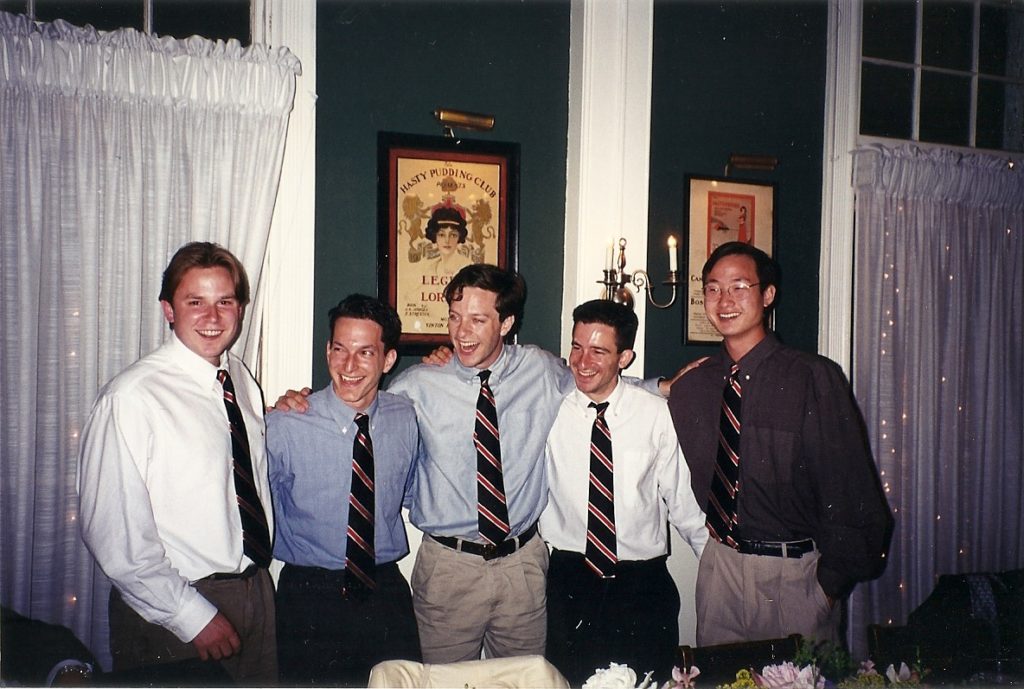
He came back to Boston and earned his doctorate at Harvard in 2004. His thesis was titled “Restoring Self-Esteem’s Self-Esteem: The Constructs of Dependent and Independent Competence and Worth.”
A little more than a decade ago if you were near Memorial Hall on Harvard’s campus, you might have seen mobs of students streaming into Sanders Theatre for Psychology 1504. The first year Ben-Shahar taught the class it was a seminar that only eight students signed up for and two dropped out; the next year, through word of mouth, 300 students took it; and the third year nearly 900. It was the largest, most popular class at Harvard, edging out the perennial favorite, Introduction to Economics.
Becoming the national media’s original happiness professor, Ben-Shahar left Harvard after his three-year lectureship and began writing books. They are decidedly in the self-help category, with takeaway questions and workbook exercises and larded with inspirational quotations. But they are rooted in scientific research and academic studies, not pop psychology. “Happiness is a life-long journey,” Ben-Shahar said. “There is no quick fix. That is why I called my first book Happier not Happiness. There are still ups and downs. We all have difficult, painful experiences: anger, anxiety, sadness, disappointment. Happiness is not binary—it is not an either or. It is on a continuum.”
Ben-Shahar has traveled the world. He has given talks before 12,000 people in Colombia and 35,000 in China. He’s done Ted Talk-like PBS specials. He’s appeared on “The Daily Show.” “It’s a fascinating subject,” Jon Stewart told Ben-Shahar at the end of their laugh-filled interview, “and one I can’t believe you are getting away with.”
He married his high-school sweetheart and after spending ten years in Israel, they and their three kids now live in Brooklyn. He runs the online Happiness Studies Academy where you can earn a certificate online in positive psychology.
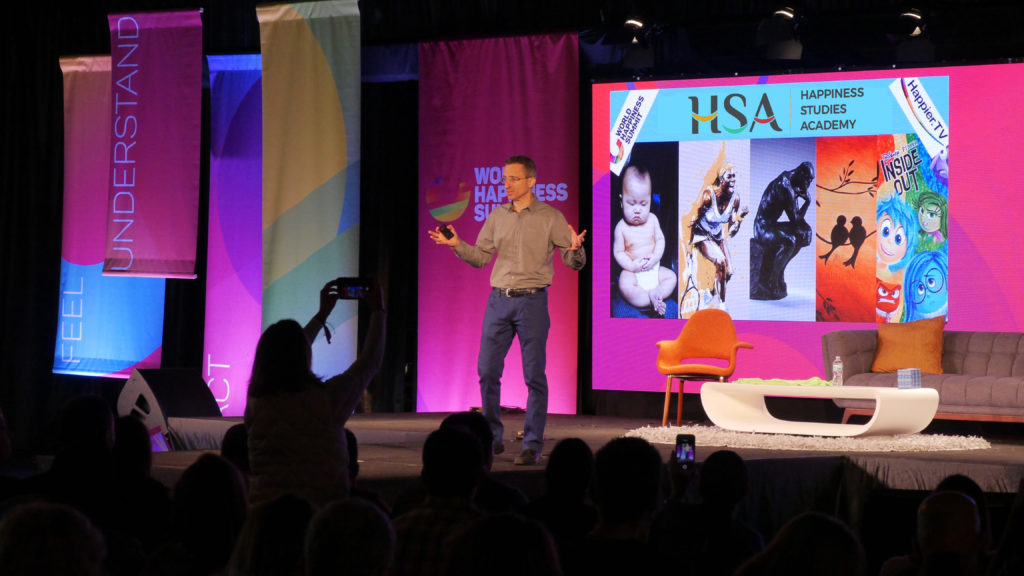
How does squash help in the pursuit of happiness?
It is an activity akin to mindful meditation (something that is scientifically proven to make you more resilient and physically healthier). “Squash is mediation in action,” he said. “Squash makes you focus. It is simple. There are no distractions. You are in a closed environment.” My favorite quote about squash as meditation comes from Herbert Warren Wind, who wrote in 1962: “There are few games like it for engulfing a man totally. He may walk onto the court with his mind still hacking away at the gray edges of some obsessive problem, but squash will elicit his full attention, whether he wishes it to or not. He usually walks off the court a half hour later so absorbed by how the game went that it takes him several minutes to remember the problem that previously was harrying him.”
Another side of squash is that it is about delayed gratification. It is the journey not the destination. It is the details, not the larger picture. “You can’t become a good squash player simply by reading a book or attending a week-long summer camp,” Ben-Shahar said. “You have to put in the hours. Squash teaches you about patience, about the long haul, about incremental improvement.” Squash is hard. The ball doesn’t bounce right back to you if you drop it, like tennis or racquetball. It is complicated—all the different shots and angles, the many strategies. As I wrote nearly twenty years ago, squash is the Othello of sports: it takes a minute to learn but a lifetime to master.
At the same time, squash is fast. It is a crucible. When the schoolboys at Harrow invented the game in the 1850s, they didn’t intentionally create a pastime that would appeal to a twenty-first century sensibility. But it does. Unlike tennis or golf, a forty-five minute squash match will exhaust you physically. In an overscheduled world that has become one of squash’s intrinsically appealing aspects.
And squash is not simply a hard workout. It is a supreme example of high-intensity interval training (HIIT). That is the new watchword for something that has been discussed since the 1970s but recently come into vogue. HIIT is about intense periods of exercise, followed by short periods of rest. In other words, a twenty-second hard rally—sprinting, lunging, turning—followed by seven seconds to pick up the ball, say the score and serve again. HIIT leads to cardiovascular fitness, fat oxidation and more cognitive control and memory capacity. It increases aerobic and anaerobic capacity. There are numerous HIIT protocols out there—the Gibala regimen, the Tabata regimen, the Zuniga regimen. CrossFit is based on HIIT. The main drawback to most HIIT regimens is that they usually require a lot of personal motivation. “Squash gets your pulse rate up to 95% of your maximum,” Ben-Shahar said. “You don’t notice you are exercising. You are just playing, trying to win the next point, the next game. It is the perfect HIIT exercise.”
Lastly, squash is social. You play with other people. There are leagues and tournaments, committee meetings and conference calls. There are the untold minutes spent outside the court or in the locker room. There are the local, regional, national and international relationships—overlapping communities that last a lifetime. If you go to a tournament, the amount of time you are on court playing a match is usually just a small sliver of the time spent at the club. “The number-one predictor of well-being is not money or prestige, not success or accolades, but rather the time we spend with people we care about and who care about us,” Ben-Shahar wrote. Squash builds and nurtures these key social relationships. “It is the ultimate currency,” he said. “The currency of happiness is the time we spend with people who care about us and we care about.” Squash banks that currency as much as any other sport.
The etymological root of the word happiness is the Scandinavian word happ, meaning luck or chance. It is the same source for the words happenstance and haphazard. Perhaps it is luck, then, that squash is the perfect game for pursuing happiness.


